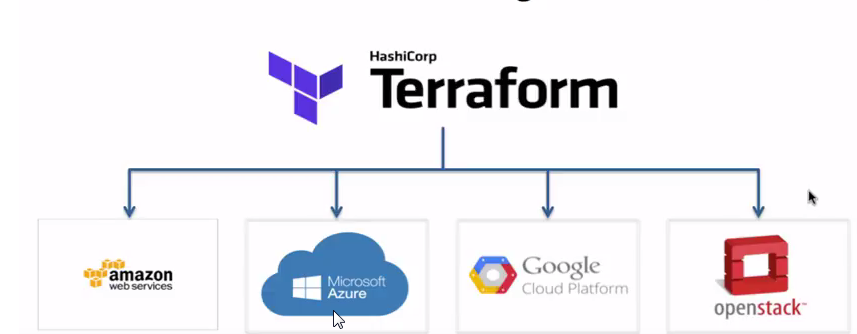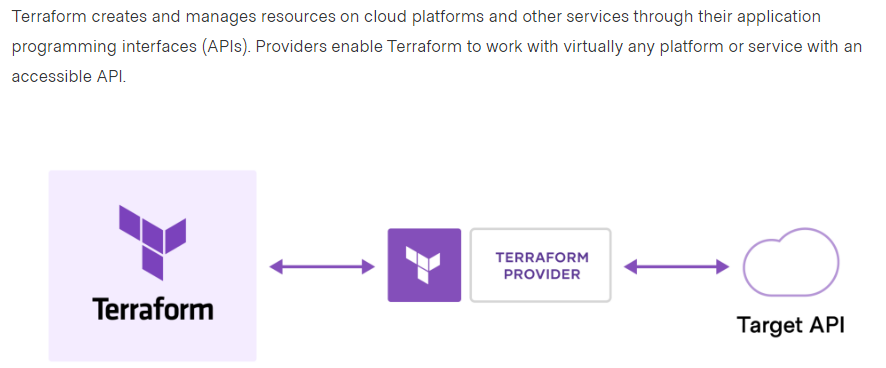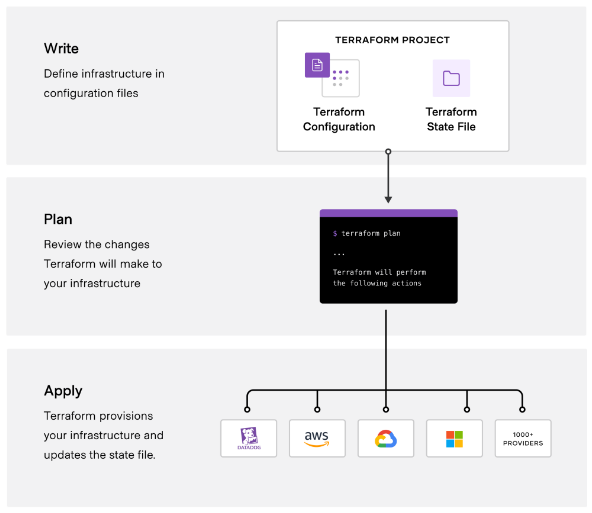
What is Terraform in DevOps and Its history & origin?
Hi friend, today in this blog I’ll explain about Terraform in DevOps and Its history & origin as well, lets know about Terraform, It is an open-source tool and it is a multi-cloud, infrastructure-as-code solution, developed by Hashicorp, that makes use of the declarative Hashicorp Configuration Language. It helps you manage existing, popular service providers like GCP, AWS, as well as custom in-house solutions. It manages external resources (such as public cloud infrastructure, private cloud infrastructure, network appliances, software as a service, and platform as a service) with “providers”.
These are the some important points about Terraform
- Original author(s) – Mitchell Hashimoto et al.
- Developer(s) – HashiCorp
- Initial release 28 July 2014
- It also supports a Terraform Module Registry, launched in 2017.
- In 2019, Terraform introduced the paid version called Terraform Enterprise for larger organizations.
How does Terraform work?

The core Terraform workflow consists of three stages:

Importance of Terraform:-
- The Terraform state file keeps track of all changes in an environment.
- It offers a great way to package and reuse common code in the form of modules.
- Its modules are comparable to functions or methods in scripting or programming languages.
- State files can also serve as a data source that can be imported by other Terraform projects.
These version controls supported by Terraform
The supported version controls are:
- Azure DevOps Services
- Azure DevOps Server
- Bitbucket Server
- Bitbucket Cloud
- Gitlab EE and CE
- Gitlab.com
- GitHub Enterprise
- GitHub.com (OAuth)
- GitHub.com
These are the features of Terraform:-
- Terraform can manage parallel environments.
- It manages external services providers very easily.
- It can manage multiple clouds to increase fault tolerance.
- It follows a Declarative approach for faster developments.
- It helps to display the resulting model in a graphical and easy-to-understand form.
- Its modular code plays a major role in achieving consistency, reusability, and collaboration.
What are the most useful Terraform commands?
These are some of the most useful Terraform commands are:
terraform init – initializes the current directory
terraform refresh – refreshes the state file
terraform output – views Terraform outputs
terraform apply – applies the Terraform code and builds stuff
terraform destroy – destroys what has been built by Terraform
terraform graph – creates a DOT-formatted graph
terraform plan – a dry run to see what Terraform will do
Explain the uses of Terraform CLI and list some basic CLI commands?
The Terraform Command-Line Interface (CLI) is used to manage infrastructure and interact with Terraform state, configuration files, providers, etc.
Here are some basic CLI commands:
terraform init – prepares your working directory for other commands
terraform destroy – destroys the previously-created infrastructure
terraform validate – check whether the configuration is valid
terraform apply – creates or updates the infrastructure
terraform plan – shows changes needed by the current configuration
Prerequisites for Terraform:-
- At least 10GB of disk space on the root volume.
- At least 40GB of disk space for the Docker data directory (defaults to /var/lib/docker )
- At least 8GB of system memory.
If you are planning to prepare for the Hashicorp Terraform certification then I would suggest you DevOpsSchool Institutes name where you can get quality training by experts. If you are planning to learn terraform then watch this tutorial and get all info.
- Best AI tools for Software Engineers - November 4, 2024
- Installing Jupyter: Get up and running on your computer - November 2, 2024
- An Introduction of SymOps by SymOps.com - October 30, 2024

